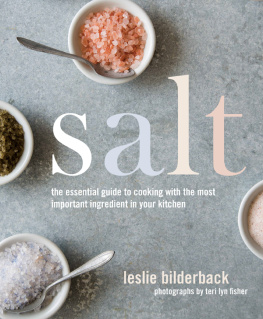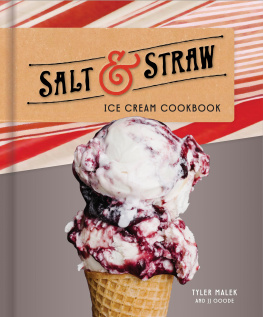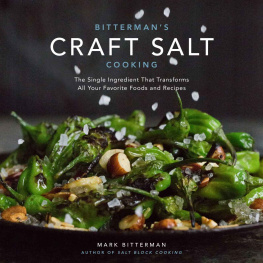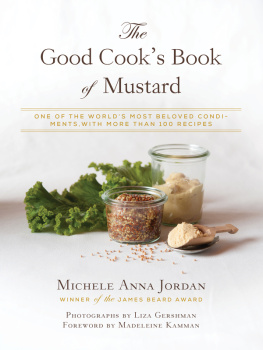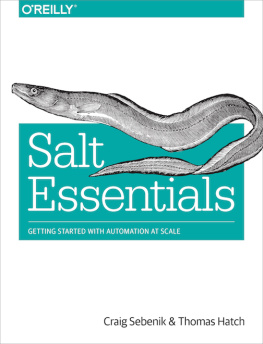Table of Contents
Guide
the
salt plate
cookbook
photographs Maren Caruso
CONTENTS
Welcome to Salt Plate Cooking 7
About the Salt Plate 8
Salt Plate Cooking Primer 11
Tips & Tricks 12
Recipes 15
Index 54
Welcome to Salt Plate Cooking
The salt plate is a versatile kitchen tool that will change the way you
cook, prepare, and serve food. Sourced from Himalayan salt deposits,
the dense slab, made from pink salt crystals, adds nutrients and
delicate flavor to food. The salt plate can be used in many different
ways. For example, you can heat it on the stove top or grill to cook
thinly cut meat, poultry, fish, and vegetables; you can warm it in the
oven to add a hint of salt flavor to biscuits, cookies, and other items
while they bake; you can chill it in the refrigerator or freezer to use
for mixing or curing raw foods, or incorporating toppings and an
appealing salty note into ice cream; or you can simply use the salt
plate as a serving platter for your favorite dishesit can go from the
stove top, oven, grill, refrigerator, or freezer right to the tabletop.
On the pages that follow, youll find a complete primer on salt plate
cooking as well as tips and tricks for making the most of its features.
Following are more than 20 recipes, from seared meats to baked
treats. Beef Teppanyaki () is an easy, yet elegant dish that
can be prepared right at the table. Or, try a foolproof technique for
salt-curing salmon () for delicious gravlax in just minutes
instead of days. Youll also discover new ways to prepare and enjoy
your favorite foods, like Cheeseburgers (), Chocolate Chip
Cookies (), and more, seasoning each item perfectly while
it cooks or bakes. Youll find all of these creative dishes, including
appetizers, mains, sides, baked goods, and desserts inside this book
to make the most of this innovative tool.
About the Salt Plate
The salt plate is harvested from enormous deposits of Himalayan pink salt that
date back millions of years. The salt is rich in minerals and high in natural moisture,
which lend lots of flavor to food and allow the salt plate to be heated or chilled to
very high and very low temperatures. Each of the salt plates three main uses create
a unique cooking and dining experience.
Hot Food
You can grill, bake, sear, and saut a wide variety of foods directly on the
salt plate. On the grill, the salt plate acts as a flat griddle, allowing you
to cook small items that might otherwise fall through the grill grate. In
the oven, the salt plate acts as a baking sheet or pizza stone, resulting
in crisp, evenly browned, and lightly seasoned baked goods and pizza.
On the stove top, the salt plate behaves like a hot frying pan, helping
you to sear meat, poultry, fish, and vegetables to a golden brown finish,
or saut items with a light coating of oil.
Cold Food
A chilled or frozen salt plate is an excellent way to serve cold dishes.
It keeps food cool and lends a welcome hint of saltiness to dishes
prepared on it, like the beef tartare on or the chocolate bark
on . You can also chill or freeze the salt plate to quickly cure
fish or mix toppings and add a touch of salty flavor into frozen desserts.
Prepared Food
The salt plates beautiful pink crystal composition makes it an elegant
serving platter, while imparting a subtle saltiness to food served on it.
Use a cold salt plate for serving fruit, cheese, sushi, deviled eggs, and
more. Or, use a warm salt plate set on a heavy trivet on the table to keep
foods warm for serving family style.
What can be
prepared on
a Salt Plate?
meat
poultry
fish
shellfish
vegetables
fruit
pizza
quesadillas
baked goods
eggs
chocolate
confections
frozen treats
Salt Plate Cooking Primer
The salt plate can be heated up to 500F for searing, sauting, grilling, and
baking. Whether heating the salt plate on a grill or stove top, or in the oven,
the secret to success is heating the plate slowly, which prevents the plate from
cracking and ensures even cooking of the food. Heating the salt plate to the
proper temperature also prevents too much salt from seeping into the food. After
cooking, let the salt plate cool completely on a heatproof surface for 38 hours.
Stove Top Cooking: Place the salt plate directly on an unheated gas
burner. Turn on the burner to low heat. After 15 minutes, increase the
heat to medium. After another 15 minutes, increase the heat to medium-
high and allow the salt plate to heat for 15 more minutes before cooking.
(The salt plate is not recommended for use on an electric stove.)
Oven Cooking: In a cold oven, move an oven rack to the lower third of
the oven and place the salt plate on the rack (do not put the salt plate
in a hot oven). Preheat the oven to the temperature called for in the
recipe. Allow the plate to warm for 1 hour and 15 minutes before cooking.
Gas Grilling: Place the salt plate on the cooking grate of an unheated
grill. Turn on the burner directly below the plate to low heat. Cover
the grill and heat until the temperature of the grill reaches 250F,
about 15 minutes. Increase the heat to medium and heat until the grill
temperature reaches 400F, about 15 more minutes, before cooking.
Charcoal Grilling: Prepare a three-zone fire in the grill (low heat on
one side, no coals in the middle, medium heat on the other side). Once
the coals are ready, place the salt plate on the low heat side and heat
for 15 minutes. Move the plate to the medium-heat side and heat for
15 more minutes before cooking.
SAFETY TIPS
Always use thick oven mitts when handling a hot salt plate. If you
are using the salt plate as a serving vessel while its still hot, use
a thick trivet to protect the table or counter top from the heat.
Tips & Tricks
Follow these basic tips for using and caring for your salt plate. Before you start,
be sure to consult the manufacturers instructions for more information.
Chill it: Place the salt plate in the
refrigerator for 2 hours. When fully
chilled, carefully transfer the plate to a
cool surface and use for serving chilled
foods. Serve food with high moisture
concentrations in a fanned or stacked
manner so that only a small edge of the
food is in direct contact with the salt plate.
Freeze it: Place the salt plate in the freezer
for 2 hours. When fully frozen, carefully
transfer it to a cool surface and use for
serving chilled and frozen foods.
Heat it: Follow the directions on
to heat the salt plate slowly and evenly.
Prep it: Foods with a high water
concentration, such as fruit, seafood, and
juicy vegetables, will absorb more salt
than foods naturally low in water. Prevent
excess saltiness by patting foods dry



